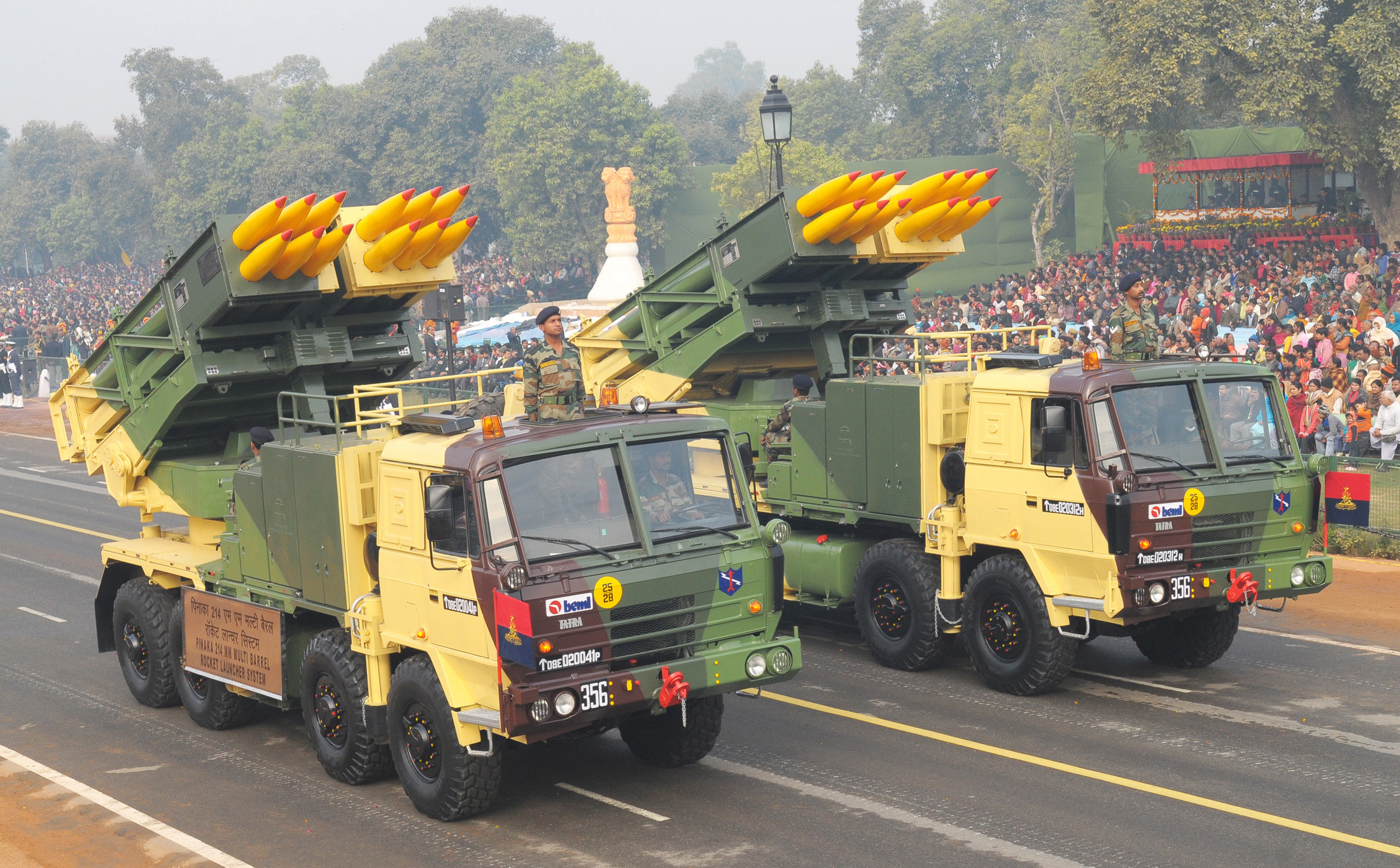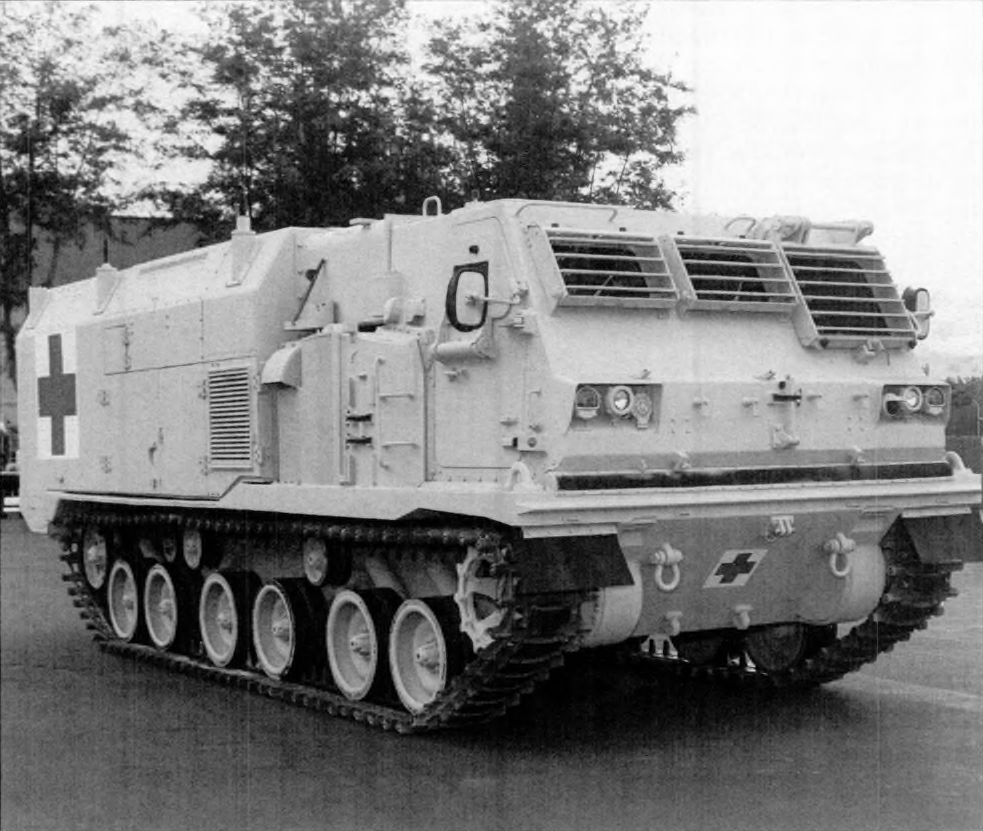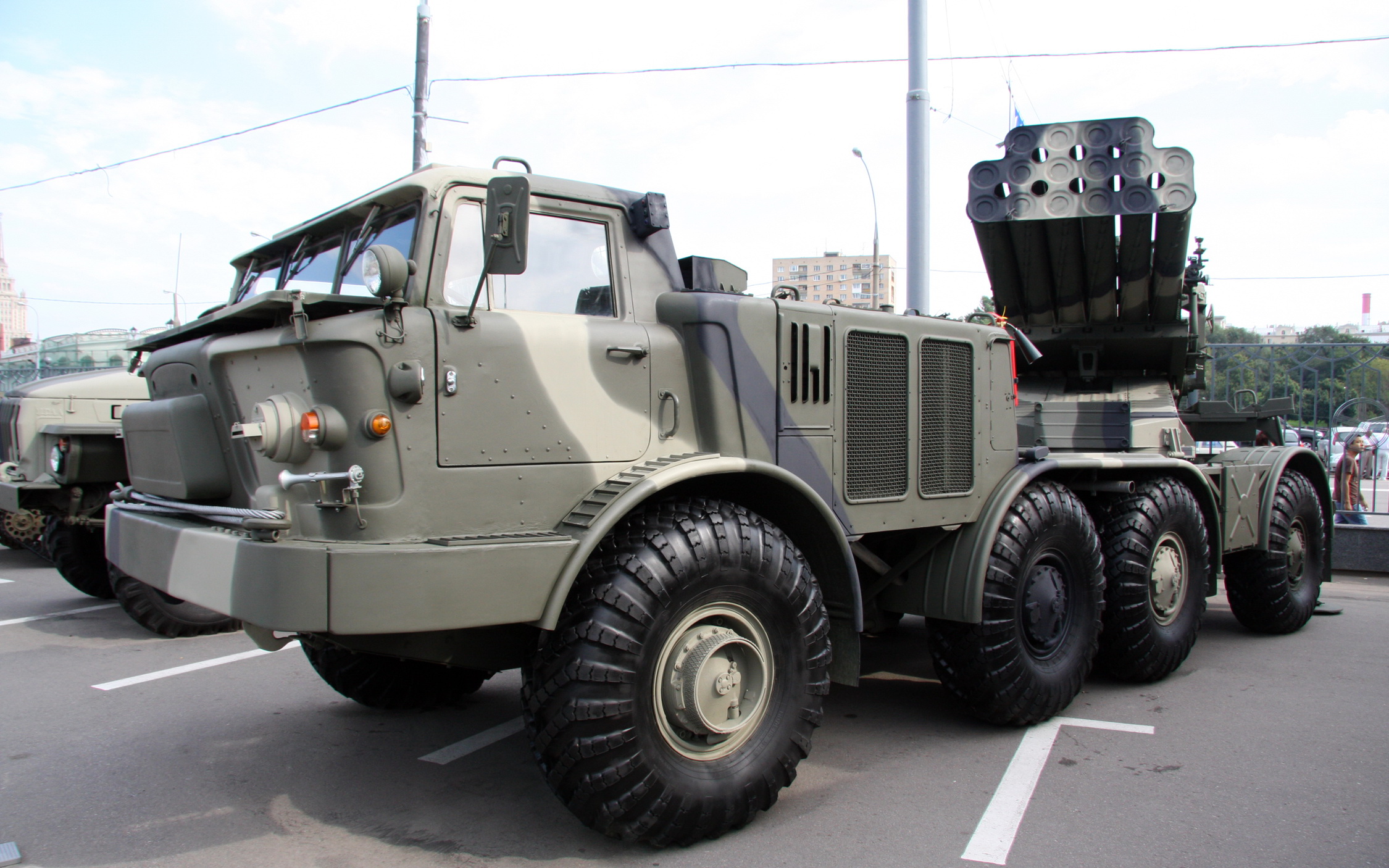|
9A52-4 Tornado
The Tornado is a family of related multiple rocket launchers developed by NPO Splav for the Russian Ground Forces. Variants of the system, which include the Tornado-G and Tornado-S models, have different capabilities and different battlefield roles. Variants The 9A52-4 Tornado system is a lightweight rocket launcher. There are two other systems. A modular MLRS based on the MZKT-79306 truck, which can carry two BM-27 Uragan or BM-30 Smerch launcher modules, and one based on the Kamaz 6×6 truck. The "Tornado-G" system is an upgrade package for the existing BM-21 Grad. The Russian government ordered 36 new "Tornado-G" based on the Kamaz 6x6 chassis, instead of the old systems based on the Ural-4320 truck. Systems in the Tornado family: * 9A53-G Tornado (2 × 15; 1×40 122 mm Upgraded BM-21 Grad Multiple Rocket Launcher Module, based on a Kamaz Truck or on a Ural-4320). * 9A53-S Tornado (2 × 6; 2×4 300 mm Upgraded BM-30 Smerch Multiple Rocket Launcher Modules, based on ... [...More Info...] [...Related Items...] OR: [Wikipedia] [Google] [Baidu] |
Multiple Rocket Launcher
A multiple rocket launcher (MRL) or multiple launch rocket system (MLRS) is a type of rocket artillery system that contains multiple launchers which are fixed to a single platform, and shoots its rocket ordnance in a fashion similar to a volley gun. Rockets are self-propelled in flight and have different capabilities than conventional artillery shells, such as longer effective range, lower recoil, typically considerably higher payload than a similarly sized gun artillery platform, or even carrying multiple warheads. Unguided rocket artillery is notoriously inaccurate and slow to reload compared to gun artillery. A multiple rocket launcher helps compensate for this with its ability to launch multiple rockets in rapid succession, which, coupled with the large kill zone of each warhead, can easily deliver saturation fire over a target area. However, modern rockets can use GPS or inertial guidance to combine the advantages of rockets with the higher accuracy of precision-guided mu ... [...More Info...] [...Related Items...] OR: [Wikipedia] [Google] [Baidu] |
2022 Russian Invasion Of Ukraine
On 24 February 2022, in a major escalation of the Russo-Ukrainian War, which began in 2014. The invasion has resulted in tens of thousands of deaths on both sides. It has caused Europe's largest refugee crisis since World War II. An estimated 8 million Ukrainians were displaced within their country by late May and 7.8 million fled the country by 8 November 2022, while Russia, within five weeks of the invasion, experienced its greatest emigration since the 1917 October Revolution. Following the 2014 Ukrainian Revolution, Russia annexed Crimea, and Russian-backed paramilitaries seized part of the Donbas region of south-eastern Ukraine, which consists of Luhansk and Donetsk oblasts, sparking a regional war. In March 2021, Russia began a large military build-up along its border with Ukraine, eventually amassing up to 190,000 troops and their equipment. Despite the build-up, denials of plans to invade or attack Ukraine were issued by various Russian gove ... [...More Info...] [...Related Items...] OR: [Wikipedia] [Google] [Baidu] |
Pinaka Multi Barrel Rocket Launcher
Pinaka (from Sanskrit: पिनाक, see Pinaka) is a multiple rocket launcher produced in India and developed by the Defence Research and Development Organisation (DRDO) for the Indian Army. The system has a maximum range of 40 km for Mark-I and 60 km for Mark-I enhanced version, and can fire a salvo of 12 HE rockets in 44 seconds. The system is mounted on a Tatra truck for mobility. Pinaka saw service during the Kargil War, where it was successful in neutralising Pakistani positions on the mountain tops. It has since been inducted into the Indian Army in large numbers. As of 2014, about 5,000 missiles are being produced every year while an advanced variant is under development with enhanced range and accuracy. As of 2019, an upgraded guided missile version of the system has been test-fired, with a range of over 90 km. Development The Indian Army operates the Russian BM-21 Grad Launchers. In 1981, in response to the Indian Army's need for a long rang ... [...More Info...] [...Related Items...] OR: [Wikipedia] [Google] [Baidu] |
M270 Multiple Launch Rocket System
The M270 Multiple Launch Rocket System (M270 MLRS) is an American-developed armored, self-propelled, multiple rocket launcher. The U.S. Army variant of the MLRS vehicle is based on the chassis of the Bradley Fighting Vehicle. The first M270s were delivered in 1983. The MLRS were subsequently adopted by several NATO countries and other countries. The MLRS first saw service with the United States in the 1991 Gulf War. The MLRS has been upgraded to fire guided missiles, and has been used by Ukraine in the 2022 Russian invasion of Ukraine. Description Background In the early 1970s, the Soviet Union had a clear advantage over U.S. and NATO forces in terms of rocket artillery. Soviet tactics of bombardment by large numbers of truck-mounted multiple rocket launchers (MRLs), such as the BM-21, would saturate a target area with thousands of rockets, ensuring some would hit specific targets while delivering a psychological impact. By contrast, U.S. artillerists favored cannon artiller ... [...More Info...] [...Related Items...] OR: [Wikipedia] [Google] [Baidu] |
BM-27 Uragan
The BM-27 Uragan (russian: БМ-27 Ураган, lit=Hurricane; GRAU index 9P140) is a self-propelled 220 mm multiple rocket launcher designed in the Soviet Union. The system began its service with the Soviet Army in the late 1970s, and was its first modern spin and fin stabilized heavy multiple rocket launcher. Description The BM-27 Uragan is capable of launching 220 mm rockets from 16 launch tubes mounted on the rear of a ZIL-135 8×8 chassis. This vehicle is extremely similar to that used in the FROG-7 free flight rocket system. It has two gasoline engines that power its 20 tonnes to a maximum speed of 65 kilometers per hour. One engine drives the four wheels on the left of the truck, while the other engine drives the four wheels on the right. The ZIL-135 has eight wheel drive, but only the front and rear axles are used for steering. It has a maximum cruising range of 500 kilometers. The cab of the ZIL-135 is NBC protected, allowing the rockets to be fired without ... [...More Info...] [...Related Items...] OR: [Wikipedia] [Google] [Baidu] |
BM-14
The BM-14 (BM for ''Boyevaya Mashina'', 'combat vehicle'), is a Soviet-made 140mm multiple launch rocket system (MLRS), normally mounted on a truck. The BM-14 can fire 140 mm M-14 rockets with a high-explosive fragmentation warhead, a smoke warhead or a chemical warhead. It is similar to the BM-13 "Katyusha" and was partly replaced in service by the 122 mm BM-21 Grad. Launchers were built in 16 and 17-round variants. The rockets have a maximum range of . The weapon is not accurate as there is no guidance system, but it is extremely effective in saturation fire. Variants * BM-14 (8U32) - 16-round model (two rows of 8), launcher mounted on the ZIS-151 truck. Entered service in 1952. Also known as BM-14-16. ** BM-14M (2B2) - modified model, mounted on the ZIL-157. ** BM-14MM (2B2R) - final upgrade, mounted on the ZIL-131. * BM-14-17 (8U35) - 17-round (8+9 launch tubes) launcher, mounted on the GAZ-63A. Developed in 1959. This launcher was also used on naval vessels, for exampl ... [...More Info...] [...Related Items...] OR: [Wikipedia] [Google] [Baidu] |
Katyusha Rocket Launcher
The Katyusha ( rus, Катю́ша, p=kɐˈtʲuʂə, a=Ru-Катюша.ogg) is a type of rocket artillery first built and fielded by the Soviet Union in World War II. Multiple rocket launchers such as these deliver explosives to a target area more intensively than conventional artillery, but with lower accuracy and requiring a longer time to reload. They are fragile compared to artillery guns, but are cheap, easy to produce, and usable on almost any chassis. The Katyushas of World War II, the first self-propelled artillery mass-produced by the Soviet Union,Zaloga, p 150. were usually mounted on ordinary trucks. This mobility gave the Katyusha, and other self-propelled artillery, another advantage: being able to deliver a large blow all at once, and then move before being located and attacked with counter-battery fire. Katyusha weapons of World War II included the BM-13 launcher, light BM-8, and heavy BM-31. Today, the nickname ''Katyusha'' is also applied to newer truck-mounte ... [...More Info...] [...Related Items...] OR: [Wikipedia] [Google] [Baidu] |
YouTube
YouTube is a global online video platform, online video sharing and social media, social media platform headquartered in San Bruno, California. It was launched on February 14, 2005, by Steve Chen, Chad Hurley, and Jawed Karim. It is owned by Google, and is the List of most visited websites, second most visited website, after Google Search. YouTube has more than 2.5 billion monthly users who collectively watch more than one billion hours of videos each day. , videos were being uploaded at a rate of more than 500 hours of content per minute. In October 2006, YouTube was bought by Google for $1.65 billion. Google's ownership of YouTube expanded the site's business model, expanding from generating revenue from advertisements alone, to offering paid content such as movies and exclusive content produced by YouTube. It also offers YouTube Premium, a paid subscription option for watching content without ads. YouTube also approved creators to participate in Google's Google AdSens ... [...More Info...] [...Related Items...] OR: [Wikipedia] [Google] [Baidu] |
Thermobaric Weapon
A thermobaric weapon, also called an aerosol bomb, a vacuum bomb or a fuel air explosive (FAE), is a type of explosive that uses oxygen from the surrounding air to generate a high-temperature explosion. The fuel–air explosive is one of the best-known types of thermobaric weapons. Thermobaric weapons are almost 100% fuel and as a result are significantly more energetic than conventional explosives of equal weight. Many types of thermobaric weapons can be fitted to hand-held launchers, and can also be launched from airplanes. The largest Russian bomb contains a charge of approximately 7 tons of a liquid fuel that when detonated creates an explosion of 39.9 tons TNT equivalent. Terminology The term ''thermobaric'' is derived from the Greek words for 'heat' and 'pressure': ''thermobarikos'' (θερμοβαρικός), from ''thermos'' (θερμός) 'hot' + ''baros'' (βάρος) 'weight, pressure' + suffix ''-ikos'' (-ικός) '-ic'. Other terms used for the family of weapons ... [...More Info...] [...Related Items...] OR: [Wikipedia] [Google] [Baidu] |
High-explosive Anti-tank Warhead
High-explosive anti-tank (HEAT) is the effect of a shaped charge explosive that uses the Munroe effect to penetrate heavy armor. The warhead functions by having an explosive charge collapse a metal liner inside the warhead into a high-velocity explosively formed penetrator (EFP) jet; this is capable of penetrating armor steel to a depth of seven or more times the diameter of the charge (charge diameters, CD). The EFPs jet effect is purely kinetic in nature; the round has no explosive or incendiary effect on the target. Because they rely on the kinetic energy of the EFP jet for their penetration performance, HEAT warheads do not have to be delivered with high velocity, as an armor-piercing round does. Thus they generate less recoil. The performance of HEAT weapons has nothing to do with thermal effects, with HEAT being simply an acronym. History HEAT warheads were developed during World War II, from extensive research and development into shaped charge warheads. Shaped char ... [...More Info...] [...Related Items...] OR: [Wikipedia] [Google] [Baidu] |
Anti-tank Mine
An anti-tank mine (abbreviated to "AT mine") is a type of land mine designed to damage or destroy vehicles including tanks and armored fighting vehicles. Compared to anti-personnel mines, anti-tank mines typically have a much larger explosive charge, and a fuze designed to be triggered by vehicles or, in some cases, remotely or by tampering with the mine. History First World War The first anti-tank mines were improvised during the First World War as a countermeasure against the first tanks introduced by the British towards the end of the war. Initially they were nothing more than a buried high-explosive shell or mortar bomb with its fuze upright. Later, purpose-built mines were developed, including the Flachmine 17, which was simply a wooden box packed with explosives and triggered either remotely or by a pressure fuze. By the end of the war, the Germans had developed row mining techniques, and mines accounted for 15% of U.S. tank casualties during the Battle of Saint-Mih ... [...More Info...] [...Related Items...] OR: [Wikipedia] [Google] [Baidu] |
Cluster Bomb
A cluster munition is a form of air-dropped or ground-launched explosive weapon that releases or ejects smaller submunitions. Commonly, this is a cluster bomb that ejects explosive bomblets that are designed to kill personnel and destroy vehicles. Other cluster munitions are designed to destroy runways or electric power transmission lines, disperse chemical or biological weapons, or to scatter land mines. Some submunition-based weapons can disperse non-munitions, such as leaflets. Because cluster bombs release many small bomblets over a wide area, they pose risks to civilians both during attacks and afterwards. Unexploded bomblets can kill or maim civilians and/or unintended targets long after a conflict has ended, and are costly to locate and remove. Cluster munitions are prohibited for those nations that ratified the Convention on Cluster Munitions, adopted in Dublin, Ireland, in May 2008. The Convention entered into force and became binding international law upon ratifyi ... [...More Info...] [...Related Items...] OR: [Wikipedia] [Google] [Baidu] |







_sunk_as_target_with_FAE_1972.jpg)

